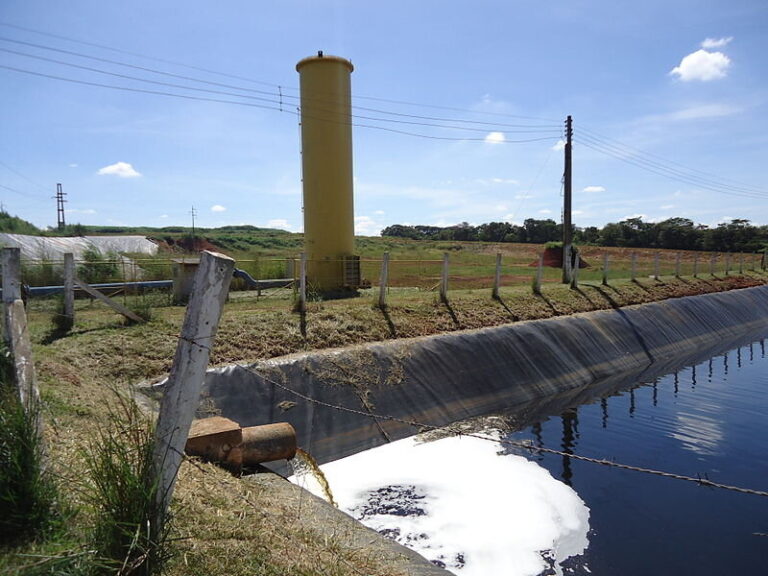5 Applications of Energy Storage Systems
Applications of energy storage systems are; voltage stabilization, emergency support, peak supply control, and energy time shift.
This article discusses the applications of energy storage systems, as follows;
1). Voltage Stabilization (as one of the Applications of Energy Storage Systems)
Energy storage systems are effective for balancing power output in the electricity distribution chain.
The role of energy storage systems in voltage stabilization is based on reactive power control. These systems actively absorb and inject power transmitted from the grid [6].
Through reactive power control as described above, excessively low or high voltage conditions can be avoided.
Low voltage and large capacity grids and power plants are most supported by voltage stabilization of energy storage systems.
2). Frequency Regulation
Frequency regulation or ‘frequency response’, is a function of energy storage systems which helps to balance the dynamics between supply and demand at all times, across interconnected power systems [5].
It is similar to voltage stabilization, and aims to optimize the stability of power distribution by adjusting the frequency of transmission to meet the demand at any given time.
Generally, frequency regulation involves maintaining a frequency of around 60Hz [3].
It is both an optimizing and protective function, as it prevents excessive fluctuations of power supply that can cause problems for both the grid operator and the power consumer.
Frequency regulation by energy storage systems is very helpful for improving the performance of renewable energy systems like solar and wind, whose rate of electricity generation does not always match that of transmission.
3). Emergency Support (as one of the Applications of Energy Storage Systems)
As a backup facility, energy storage systems are useful in providing emergency support to the electricity distribution network at times of abnormal energy conditions.
This support is most needed by large, interconnected networks like smart grid networks, where overall performance can be affected negatively by the malfunction of a single component. It can also be provided within a smaller context, such as in buildings.
Emergency response can also serve as a protective functionality that shuts down or alters the mode of power supply when necessary, to prevent hazards.

4). Peak Supply Control
Energy storage systems can be used to control the amount of power supplied to consumers at times of peak demand. This can be described as peak load shifting, peak shaving, or peak load control [2].
Peak shaving works along with voltage stabilization and frequency regulation, to balance supply and demand, and to improve the energy efficiency of power distribution.
The functionality is good for reducing electricity cost significantly, and helps to achieve energy conservation in the power distribution chain.
Artificial intelligence algorithms have proven to be effective for optimizing the peak shaving functionality of energy storage systems [1].
5). Energy Time Shift or Transmission Deferral (as one of the Applications of Energy Storage Systems)
Time-shifting in electricity distribution is simply the storage of power at times of surplus availability, to be used at times of deficit.
It is very good for operation scheduling, and makes power supply more reliable.
Energy time shifting by storage systems is often more effective in the short-term, and can easily be programmed for autonomous operation [4].
It is especially helpful with renewable energy sources that have unstable rates of power production.
Conclusion
Applications of energy storage systems include;
1. Voltage Stabilization
2. Frequency Regulation
3. Emergency Support
4. Peak Supply Control
5. Energy Time Shift or Transmission Deferral
References
1). Chua, K. H.; Lim, Y.; Morris, S. (2016). “Energy storage system for peak shaving.” International Journal of Energy Sector Management 10(1):3-18. Available at: https://doi.org/10.1108/IJESM-01-2015-0003. (Accessed 29 October 2022).
2). Ghazwan, M.; Ghani, R. A. (2020). “Control of Battery Energy Storage System for Peak Shaving using Enhanced Time of Use Scheme.” 2020 IEEE International Conference on Power and Energy (PECon). Available at: https://doi.org/10.1109/PECon48942.2020.9314416. (Accessed 29 October 2022).
3). Lee, T. (2017). “Energy Storage in PJM: Exploring Frequency Regulation Market Transformation.” Available at: https://kleinmanenergy.upenn.edu/research/publications/energy-storage-in-pjm-exploring-frequency-regulation-market-transformation/. (Accessed 31 October 2022).
4). Park, Y.; Park, J.; Kim, N.; Lee, K. (2017). “Linear Formulation for Short-Term Operational Scheduling of Energy Storage Systems in Power Grids.” Energies 10(2):207. Available at: https://doi.org/10.3390/en10020207. (Accessed 31 October 2022).
5). Yoon, M.; Lee, J.; Song, S.; Yoo, Y.; Jang, G.; Jung, S.; Hwang, S. (2019). “Utilization of Energy Storage System for Frequency Regulation in Large-Scale Transmission System.” Energies 12(20):3898. Available at: https://doi.org/10.3390/en12203898. (Accessed 31 October 2022).
6). Zimann, F. J.; Batschauer, A. L.; Mezaroba, M.; Neves, F. A. (2019). “Energy storage system control algorithm for voltage regulation with active and reactive power injection in low-voltage distribution network.” Electric Power Systems Research. Available at: https://doi.org/10.1016/j.epsr.2019.04.003. (Accessed 31 October 2022).




